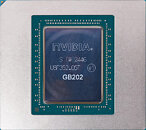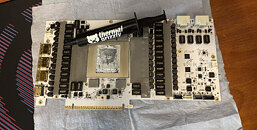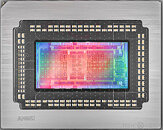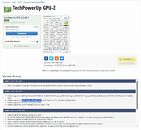
NVIDIA Reportedly Warns Chinese AICs About Potential GeForce RTX 5090D GPU Supply Cut-off
Mid-way through April, we heard about sanctions affecting shipments of NVIDIA's H20 AI chips into China. Despite (rumored) best efforts made by Jensen Huang and colleagues, the US government has banned the export of Team Green's formerly sanction-conformant design. Similarly, NVIDIA prepared a slightly less potent GPU for gaming applications—exclusively for the Chinese market. Despite sporting a restricted GB202 "Blackwell" GPU die, the GeForce RTX 5090D 32 GB is still a monstrous prospect. According to Chinese PC hardware news sources, Team Green representatives have sent alerts to "all" of its Chinese add-in-card partners (AICs)—early warning signs have indicated a possible cut-off of GB202 GPUs in the near future. A member of the Chiphell forum disclosed some insider knowledge and dismissed unfounded speculation about RTX 5090D cards being replaced by "full fat" RTX 5090 options.
sthuasheng commented on Team Green's alleged bulletin—distributed at some point last week: "the notice only said that the supply of RTX 5090D was suspended, ...this did not mean any sales or transportation ban; it urged everyone not to make any speculations or judgments unless there was an official notice issued at a later date. After this notice was issued, each AIC began to notify agents to suspend sales, because the inventory of 5090D has always been very small, so it is necessary to keep these stocks to observe the subsequent situation and deal with the subsequent after-sales. At the same time, we might as well speculate that each AIC and dealer may also have the intention to stockpile 5090D units and then sell them at an elevated price." BenchLife.info decided to reach out to industry moles, following an absorption of various Chiphell whispers.
sthuasheng commented on Team Green's alleged bulletin—distributed at some point last week: "the notice only said that the supply of RTX 5090D was suspended, ...this did not mean any sales or transportation ban; it urged everyone not to make any speculations or judgments unless there was an official notice issued at a later date. After this notice was issued, each AIC began to notify agents to suspend sales, because the inventory of 5090D has always been very small, so it is necessary to keep these stocks to observe the subsequent situation and deal with the subsequent after-sales. At the same time, we might as well speculate that each AIC and dealer may also have the intention to stockpile 5090D units and then sell them at an elevated price." BenchLife.info decided to reach out to industry moles, following an absorption of various Chiphell whispers.








































































































